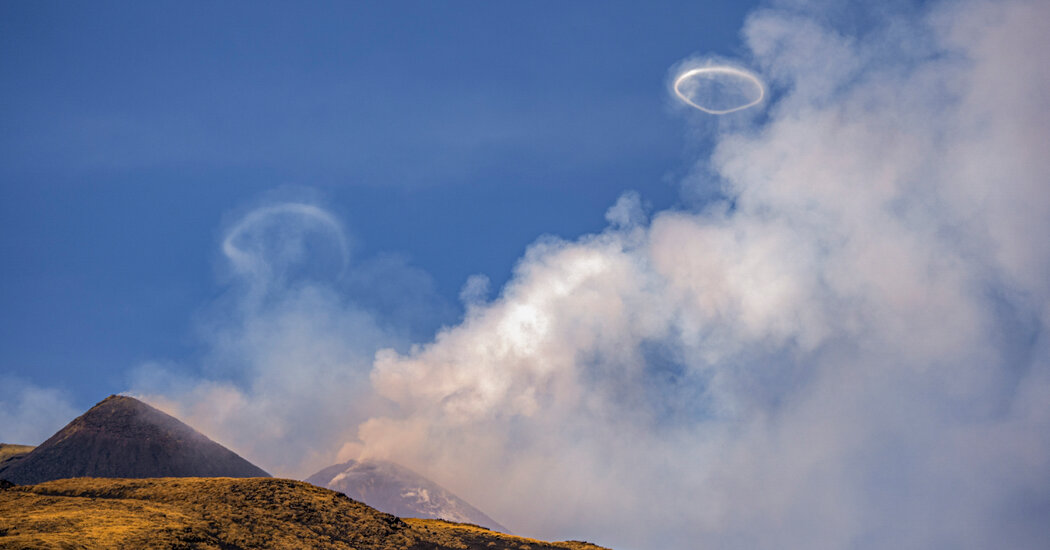
For just over a week, Etna, one of the most active volcanoes in Europe, has been emitting circular, mostly white smoke rings in the skies of Sicily.
It is not the first time that Etna enchants spectators with its puffs (he has been nicknamed the Gandalf of volcanoes, after the wizard who puffs his pipe in “The Lord of the Rings”). But experts say that this month Etna “broke all previous records” with the frequency of the rings, according to Boris Behncke, a volcanologist at the National Institute of Geophysics and Volcanology in Catania, who posted the phenomenon on Facebook.
The rings, known as volcanic vortex rings, appeared earlier this month after a small vent opened on the northwestern edge of the southeastern crater. The phenomenon occurs when enough pressure builds up for the magma inside the crater to push condensed gases, mostly water vapor, through the vent.
In this case the vent is perfectly circular, making the rings particularly perfect. “It's beautiful,” said Simona Scollo, another volcanologist at the INGV Etna Observatory in Catania, using the Italian word for beautiful. Last year, Scollo co-published a study on the dynamics of volcanic vortex rings in the journal Scientific Reports.
But, he said, the activity doesn't mean Etna will erupt particularly spectacularly. “No, no, no,” she said.
During a telephone interview Tuesday, he said the mechanism of the smoke rings was similar to how dolphins blow bubble rings. “They compress the water in their mouth and using their tongue push it out of their mouth creating enough pressure that it forms a ring,” she said.
According to the study, depending on weather conditions, the rings remain suspended in the air for between one and 10 minutes. “If there's turbulence, they fall apart more quickly,” she said.
Interviewed by the New York Times last year, Scollo said the study hoped to better understand how volcanoes worked, “not just when they create disaster for people or when they are very dangerous,” but also in calmer times.
The volcano's new vent has spewed hundreds of rings, but another vent on the volcano has also spewed rings, albeit more spaced apart, since last year.
The phenomenon was first recorded on Etna in 1724, followed by periodic sightings, the latest last year, and quite spectacularly in 2000.
According to the description of its 2013 inscription as a UNESCO World Heritage Site, Etna is “the highest island mountain in the Mediterranean and the most active stratovolcano in the world”.
“No volcano on earth produces as many volcanic vortex rings as Etna, we have known this for some time,” Behncke noted.
Etna is not the only volcano where the phenomenon has been recorded. Volcanic vortex rings have been inflated by numerous volcanoes around the world, from Momotombo in Nicaragua to the ash-spewing air plug Eyjafjallajökul in Iceland, to Mount Redoubt in Alaska to another active Italian volcano, Stromboli.
Ms. Scollo said activity at the new mouth is slowing. And it could end altogether.
“It may stop because the properties of the conduit that allowed these volcanic vortex rings to form may change, perhaps with blockages,” he said. Or the amount of gas inside the pipe could decrease, she added.
